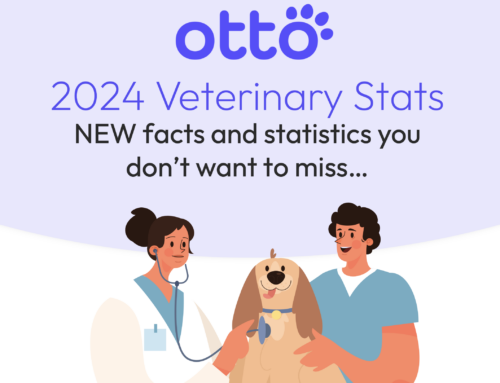
Quick Guide to Wellbeing
for Veterinary Teams
The issue of wellbeing for veterinary teams is of paramount importance. However, the task of improving that wellbeing for employees at all levels of the clinic can seem daunting. The following quick guide will display three ways clinical teams can cultivate veterinary wellbeing.
1. Make personal development a top priority
When time is short and stress is abundant for people, one of the first things that goes by the wayside is personal development. A lack of personal development can lead to an overall deterioration of wellbeing and health. Essentially, it is impossible to have a healthy team of veterinary clinical team members if each individual member is not well.
According to the Center for Health & Wellbeing, there are seven dimensions of wellbeing that, when balanced, lead to a much fuller and satisfying life. Those dimensions are physical, intellectual, environmental, vocational, social, emotional, and spiritual. In order to avoid issues like compassion fatigue, burnout, and others, it is imperative that clinical professionals focus individually on balancing those dimensions and improving how they manifest in the workplace.
Leaders of veterinary clinical practices need to spend time cultivating their own wellbeing while encouraging and enabling the rest of the staff to do the same. To assess your current level of wellbeing, we suggest taking the Professional Quality of Life (ProQOL) assessment.
Here are some quick personal development ideas:
- Physical training: Give time off during the week for employees to exercise, supply gym memberships for employees, go on walking staff meetings
- Emotional support: Provide counseling sessions for employees, build in decompression time during each workday, encourage periodic time off
- Social encouragement: Schedule for staff and their families and friends to socialize outside of work, encourage friendship development, allow for community volunteerism
2. Increase job satisfaction while reducing job stress
In most professions, there is a very strong correlation between job satisfaction and job stress, and this certainly applies to the veterinary field. Unsurprisingly, veterinary clinic ownership and management try to increase job satisfaction while simultaneously reducing job stress amongst the staff. However, many clinics have blind spots which create stressors that negatively affect the team and clinical operations.
One of the main stressors in veterinary clinics is caused by inefficient workflows. These inefficiencies are triggered by things like multiple difficult-to-use technology platforms, clunky communication between staff and pet parents, not booking enough time for certain kinds of appointments, and much more. Additionally, an easy way to decrease the level of stress with clinic employees is to utilize automation for repeated tasks. This can be everything from receptionists sending out patient intake forms to veterinarians communicating with pet parents about follow-up appointments.
In order to counteract many of those issues, thousands of veterinarians across the US have implemented the top veterinary workflow solution Otto Flow in order to eliminate bottlenecks in their processes and improve the overall efficiency of their clinical operations. Clinics are also implementing tools like Otto Connect to significantly reduce incoming call volume from pet parents by automating responses to the most common incoming requests. Products like Otto Flow and Otto Connect lead staff to cultivate veterinary wellbeing by increasing job satisfaction while reducing job stress.
Here are some quick ideas to help increase job satisfaction:
- Remote work days: Utilize remote care via telemedicine, triage from home, provide mobile vet services to clientele
- Training: Contribute tickets to conferences, offer learning stipends for continuing education, supply a learning library inside the clinic
- Bonuses and incentives: Give monthly bonuses for hitting individual goals, schedule team outings for hitting team goals, give days off or extended lunch breaks after difficult weeks
3. Provide time for staff projects and team building
Staff development and team building can easily be forgotten or pushed to the backburner, especially in the high-stress environment of a typical veterinary clinic. However, investing in team building is one of the most effective ways to improve team morale and performance.
Putting a sense of urgency on this behavior underscores how important the health of the staff is overall. The more collegiality shared amongst veterinary staffs the more healthy that staff will be overall. Staff disengagement and dissatisfaction can lead directly to turnover which wastes important business resources.
The Society for Human Resource Management (SHRM) discovered that the average American company will spend 50-60% of an employee’s annual salary to replace the former employee, and the total costs associated with the turnover can range from 90-200% of the annual salary. Additionally, the more specialized the employee, the higher the replacement cost. In a clinical setting where training requires a substantial investment of time and money and employee replacement costs are high, it is imperative that ownership and management engage in staff development and team building activities to improve retention of all key employees.
Here are some quick staff development and team building ideas to get your creative juices flowing:
- Staff projects: As a staff, pick a project (i.e., community service, charitable, art, etc.) to complete as a team.
- Holiday celebrations: Make a big deal out of holidays throughout the year by decorating your office and dressing the part as a staff.
- Recognition: Create a way to give public shout-outs and kudos to team members for going above and beyond the call of duty.
Wrap-up
By prioritizing making personal development a focal point, reducing job stress, and emphasizing staff development and team building, veterinary teams have the power to increase job satisfaction. The time to cultivate wellbeing for veterinary teams is now, and we are here to help.



